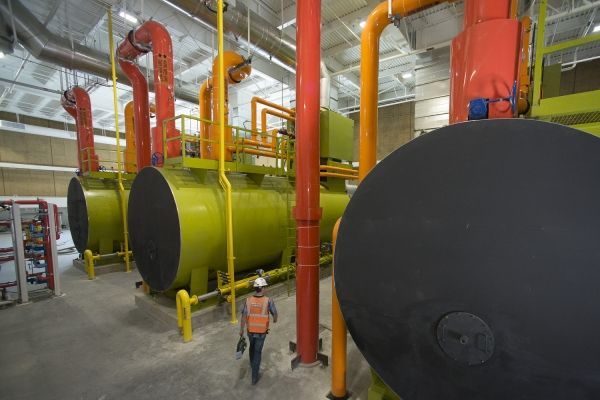Over the past several years, Stanford transformed its energy infrastructure by electrifying its heating system, replacing its gas-fired power plant with grid power, creating a unique system to recover heat, building massive tanks to store hot and cold water, and building a solar power plant. The Stanford Energy System Innovations project cut the campus’s total greenhouse gas emissions 68 percent and is lowering the system’s operating costs by $425 million over 35 years.
Now, a new study, published in Energy & Environmental Science, lays out a roadmap for expanding those benefits at Stanford and translating them to other campuses and communities. The study’s approach, if broadly adopted, could help maintain the reliability of electricity grids increasingly dependent on intermittent renewables.
Stanford’s thermal storage tanks can hold up to a half-day’s supply of heating and cooling, which means they could be used like batteries to store excess energy and reduce carbon emissions. The authors find that the campus could maximize its purchases of electricity at times of day when the grid is flush with renewable power, using the electricity to heat and chill water especially during those hours. By 2025, the study shows, this protocol could reduce the university’s carbon emissions from heating and cooling an additional 40 percent.
“Large-scale thermal storage is a very real option now. It could provide affordability and flexibility for power grids of the future,” said the paper’s principal investigator, Sally Benson, professor of energy resources engineering and co-director of Stanford’s Precourt Institute for Energy.
Read more at Stanford University
Image: A new study indicates Stanford’s Central Energy Facility can serve as a model for other large campuses and communities seeking to cut carbon dioxide emissions affordably. (Image credit: L.A. Cicero)


